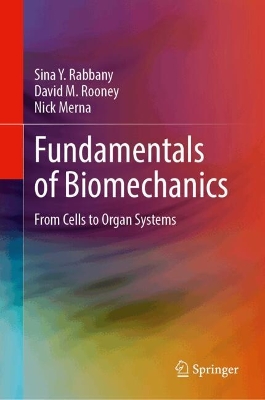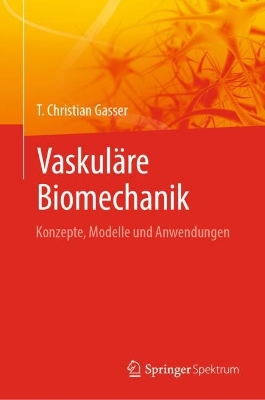Physics of Molecular and Cellular Processes
 portes grátis
portes grátis
Physics of Molecular and Cellular Processes
Levine, Herbert; Blagoev, Krastan B.
Springer Nature Switzerland AG
09/2022
253
Dura
Inglês
9783030986056
15 a 20 dias
576
Descrição não disponível.
Part I. The non-equilibrium nature of living systems.- 1.1 Introduction.- 1.2 Equilibrium and non-equilibrium thermodynamics and statistical physics.- 1.3 Organization and evolution of life.- 1.4 The physics of biomolecules.- 1.5 The physics of proteins: The special role of water. Folding, unfolding and misfolding. Active sites, allostery. Molecular motors (e.g. flagellar motor) and the use of free energy. Protein-protein interactions and their role in cell signaling.- 1.6 Physics of DNA and RNA: Electrostatistics, folding, unfolding, topology, geometry, accessibility. Protein-DNA interactions and chromatin structure.- 1.7 Physics of metabolism: Energy production and charge transport. Network analysis. Bacterial growth laws. Mitochondrial structure and function.- 1.8 Physics of Cytoskeletal proteins. Polymerization kinetics and applications to actin and microtubules. Nucleation dynamics. Kinesin, Dynein and Myosin as non-equilibrium walkers.- 1.9 Physics of Viruses.- Part II. The Physics of the Cell.- 2.1 Physics of the cell membrane: real and model membranes, Helfrich free energy. Embedded protein, including surface receptors. Membrane fusion and fission, application to viral entry, endo- and exo-cytosis.- 2.2 Dynamics in the cell. Transport via passive diffusion versus active transport. Targeting to organelles via molecular signals. Scaffolds and compartments for chemical reaction control. The cytoskeletal network and its role in cell mechanics.- 2.3 Genetic networks. Transcriptional dynamics, examples from phage and bacteria. Control of translation, for example via small RNAs. Role of chromatin structure for eukaryotic systems.- 2.4 Signal transduction: Receptor subtypes (GPCR, Tyrosine kinase, ion channels) and kinetics. Phosphorelay in the Map Kinase pathway. Second messenger dynamics, including amplification in e.g. calcium signaling. Adaptation and chemotacis in bacteria.- Part III. The Physics of the Organism.- 3.1 Cell division - DNA replication. Bacteria cell size determination, contractile ring placement and dynamics; Eukaryotic cell division mitotic spindle, cell cycle checkpoints.- 3.2 DNA damage and repair, chromosome instability, damage checkpoints, telomere dynamics and chromosome instability.- 3.3 Cell motion types of bacterial motion: swimming versus gliding. Crawling of eukaryotic cells; adhesion complexes, active forces due to contraction and polymerization. Chemotaxis and durotaxis.- 3.4 Cellular decisions sporulation in Bacillus,Dictyostelium. Stem cells versus differentiated cells. Landscapes in non-equilibrium systems. The origins of multicellularity.
Este título pertence ao(s) assunto(s) indicados(s). Para ver outros títulos clique no assunto desejado.
Physics of living systems;Biomolecular physics;Physical biology textbook;Principles of biological physics;Physical models in biology;biophysics textbook;Introduction to biological physics
Part I. The non-equilibrium nature of living systems.- 1.1 Introduction.- 1.2 Equilibrium and non-equilibrium thermodynamics and statistical physics.- 1.3 Organization and evolution of life.- 1.4 The physics of biomolecules.- 1.5 The physics of proteins: The special role of water. Folding, unfolding and misfolding. Active sites, allostery. Molecular motors (e.g. flagellar motor) and the use of free energy. Protein-protein interactions and their role in cell signaling.- 1.6 Physics of DNA and RNA: Electrostatistics, folding, unfolding, topology, geometry, accessibility. Protein-DNA interactions and chromatin structure.- 1.7 Physics of metabolism: Energy production and charge transport. Network analysis. Bacterial growth laws. Mitochondrial structure and function.- 1.8 Physics of Cytoskeletal proteins. Polymerization kinetics and applications to actin and microtubules. Nucleation dynamics. Kinesin, Dynein and Myosin as non-equilibrium walkers.- 1.9 Physics of Viruses.- Part II. The Physics of the Cell.- 2.1 Physics of the cell membrane: real and model membranes, Helfrich free energy. Embedded protein, including surface receptors. Membrane fusion and fission, application to viral entry, endo- and exo-cytosis.- 2.2 Dynamics in the cell. Transport via passive diffusion versus active transport. Targeting to organelles via molecular signals. Scaffolds and compartments for chemical reaction control. The cytoskeletal network and its role in cell mechanics.- 2.3 Genetic networks. Transcriptional dynamics, examples from phage and bacteria. Control of translation, for example via small RNAs. Role of chromatin structure for eukaryotic systems.- 2.4 Signal transduction: Receptor subtypes (GPCR, Tyrosine kinase, ion channels) and kinetics. Phosphorelay in the Map Kinase pathway. Second messenger dynamics, including amplification in e.g. calcium signaling. Adaptation and chemotacis in bacteria.- Part III. The Physics of the Organism.- 3.1 Cell division - DNA replication. Bacteria cell size determination, contractile ring placement and dynamics; Eukaryotic cell division mitotic spindle, cell cycle checkpoints.- 3.2 DNA damage and repair, chromosome instability, damage checkpoints, telomere dynamics and chromosome instability.- 3.3 Cell motion types of bacterial motion: swimming versus gliding. Crawling of eukaryotic cells; adhesion complexes, active forces due to contraction and polymerization. Chemotaxis and durotaxis.- 3.4 Cellular decisions sporulation in Bacillus,Dictyostelium. Stem cells versus differentiated cells. Landscapes in non-equilibrium systems. The origins of multicellularity.
Este título pertence ao(s) assunto(s) indicados(s). Para ver outros títulos clique no assunto desejado.







